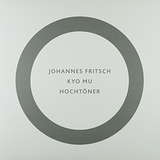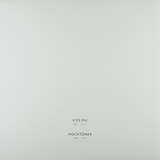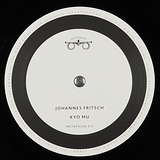Johannes Fritsch: Kyo Mu / Hochtöner
First time viny pressing of excellent, pioneering Electronic music compositions from 1974 & 1982
‘Kyo Mu’ and ‘Hochtöner’ both reveal a mesmerizing symbiosis of innovative sound exploration and visionary interior music, a sublime compound of fine-drawn intricate arrangements skillfully projected in space and time, or perhaps beyond space and time.
Johannes Fritsch (1941–2010) was an award-winning composer, musician, publisher, studio owner, author and music teacher. He studied viola and composition with Bernd Alois Zimmermann and was member of the Stockhausen Ensemble from 1964 to 1970. Together with Rolf Gehlhaar and David Johnson (also from the Stockhausen Ensemble) he established the Feedback Studio Köln and the Feedback Studio Verlag, the first publishing house owned by composers in Germany.
Fritsch’s complex musical estate consists of approximately 130 works: it covers electronic music, chamber music, ballet, theatre and film music, organ compositions, an opera and pieces for large orchestras. Although Fritsch’s compositions are varied, all of them convey a strong interest in new sound combinations and sound colours.
Fritsch described the piece in a text for a CD published by cybele records in 2006:
“Various levels of the composition interpenetrate each other. On the one hand, there is the harmonics theory of the tone systems: there are sounds that are overtonal in nature (natural harmonics, whistle-tones on the flute) and ‘undertones’: a frequency divider built by David Johnson is used to make audible the undertones of a high-pitched fundamental tone, together with naturally tempered spectra. As well as major (arithmetic division of the intervals according to the formula a+b:2), minor (2ab:a+b) and different temperaments (vab), the ring modulation between flute and viola plays an important role. The ring modulator provides the sums and the differences of the frequencies from the two inputs (and the products of the amplitudes) at the start. The summation tones are an octave higher than the arithmetical division of the intervals; the differential tones give the spectra clearly recognisable roots depending on their degree of consonance. Besides this constructive principle underlying the harmonic form, the piece contains self-quotes, quotes, and associations from music history and non-European music. All instrumental sounds are amplified by microphone and blend with the sounds produced by the tape and synthesizer, making it often impossible to tell which sounds have been produced ‘live’ and which are taped. The figures and formations appear as in a dream, fragments in a broad, ever-changing expanse of sound, limited only by the high frequencies.”



